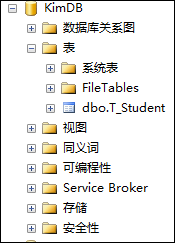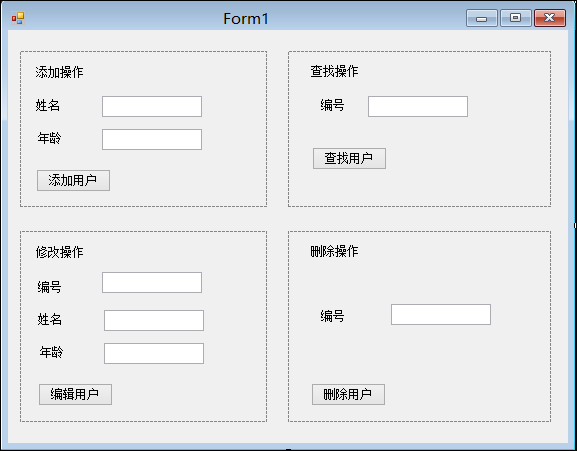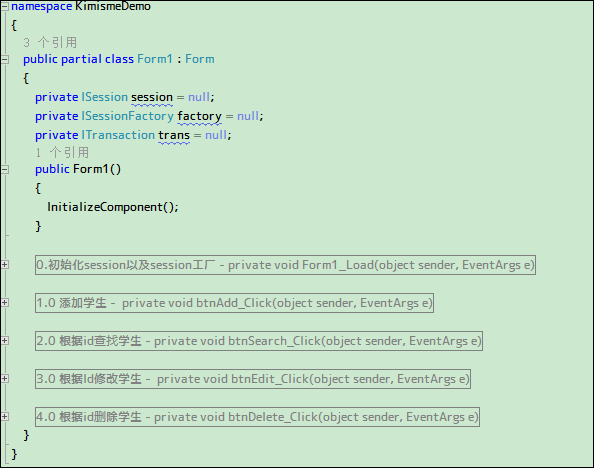1.本次所有代码是在一下环境下运行的
| 学习系统:win8 64bit 开发环境:VS2013,MSSQL2012 NHibernate版本:NHibernate-4.0.3.GA 【文章结尾有本次笔记下载链接,里面只包含需要的程序集】 运行环境:.Net Framework 4.5 |
2.什么是NHibernate
NHibernate是ORM框架中的一种,那么什么是ORM框架,我在MVC那边有一篇介绍EF框架时说过。
大家可以看看这篇文章什么是ORM框架
这里就强调一句话:【ORM(Object Relational Mapping)是一种为了解决面向对象与关系型数据库互相匹配而存在的技术】。
3.开始NH之旅
本次学习的代码结构如下
第一步:在数据库中创建.net类持久化的对应表
create table T_Student ( SId int primary key identity(1,1), SName nvarchar(10), SAge int )
第二步:创建需要被持久化的.Net类
namespace Kimisme { public class Student { public int Id { get; set; } public string Name { get; set; } public int Age { get; set; } } }
<?xml version="1.0" encoding="utf-8"?> <hibernate-mapping xmlns="urn:nhibernate-mapping-2.2" default-lazy="false"> <class name="Test.Student,Test" table="T_Student"> <id name="Id" column="sId" type="int"> <generator class="native" /> </id> <property name="Name" column="sName" type="string" /> <property name="Age" column="sAge" type="int" /> </class> </hibernate-mapping>
说明:
| <class name="Test.Student,Test" table="T_Student"></class>:DotNet中类Student(命名空间.类名)对应数据库中表T_Student
<id name="Id" column="sId" type="int"></id>:类Student的字段Id对应于表T_Student中的SId <generator class="native" />:native表示自动生成,因为表中tId设置了主键 |
第四步:创建NH的配置文件,告诉NH要连接什么数据库以及怎么连接数据库App.config
<?xml version="1.0" encoding="utf-8" ?> <configuration> <configSections> <section name="hibernate-configuration" type="NHibernate.Cfg.ConfigurationSectionHandler,NHibernate" requirePermission="false"/> </configSections> <hibernate-configuration xmlns="urn:nhibernate-configuration-2.2" > <session-factory> <property name="connection.provider">NHibernate.Connection.DriverConnectionProvider, NHibernate</property> <property name="connection.driver_class">NHibernate.Driver.SqlClientDriver</property> <property name="connection.connection_string">Server=(local);initial catalog=KimDB;Integrated Security=SSPI</property> <property name="show_sql">true</property> <property name="dialect">NHibernate.Dialect.MsSql2012Dialect</property> </session-factory> </hibernate-configuration> <startup> <supportedRuntime version="v4.0" sku=".NETFramework,Version=v4.5" /> </startup> </configuration>
说明:
| <configSections> <section name="hibernate-configuration" /> </configSections>:NH配置文件,必须放在最上面
<property name="connection.provider"></property>:NH连接数据库提供程序 <property name="connection.driver_class"></property> :连接数据库的驱动程序 <property name="connection.connection_string"></property> :数据库连接 <property name="show_sql"></property> :是否显示sql语句 <property name="dialect"></property> :方言 |
第五步:使用NH提供的API做增速改查
首先看看本次完成后的界面 以及 代码层次:
4.终于可以敲代码了
首先要引用两个文件,一个是Kimisme类库,一个是NHibernate.dll
namespace KimismeDemo { public partial class Form1 : Form { private ISession session = null; private ISessionFactory factory = null; private ITransaction trans = null; public Form1() { InitializeComponent(); } #region 0.初始化session以及session工厂 - private void Form1_Load(object sender, EventArgs e) private void Form1_Load(object sender, EventArgs e) { Configuration config = new Configuration().AddAssembly("Kimisme"); factory = config.BuildSessionFactory(); session = factory.OpenSession(); } #endregion #region 1.0 添加学生 - private void btnAdd_Click(object sender, EventArgs e) private void btnAdd_Click(object sender, EventArgs e) { trans = session.BeginTransaction(); try { Student stu = new Student(); stu.Name = txtName.Text; stu.Age = Convert.ToInt32(txtAge.Text); session.Save(stu); trans.Commit(); MessageBox.Show("添加成功"); } catch (Exception ex) { trans.Rollback(); MessageBox.Show(ex.Message); } } #endregion #region 2.0 根据id查找学生 - private void btnSearch_Click(object sender, EventArgs e) private void btnSearch_Click(object sender, EventArgs e) { try { Student stu = session.Get(typeof(Student), int.Parse(txtId.Text)) as Student; MessageBox.Show("姓名:【" + stu.Name + "】年龄:" + stu.Age); } catch (Exception ex) { MessageBox.Show(ex.Message); } } #endregion #region 3.0 根据Id修改学生 - private void btnEdit_Click(object sender, EventArgs e) private void btnEdit_Click(object sender, EventArgs e) { trans = session.BeginTransaction(); try { Student stu = session.Get(typeof(Student), int.Parse(txtEditId.Text)) as Student; stu.Name = txtEditName.Text; stu.Age = Convert.ToInt32(txtEditAge.Text); session.Update(stu); trans.Commit(); MessageBox.Show("修改成功"); } catch (Exception ex) { trans.Rollback(); MessageBox.Show(ex.Message); } } #endregion #region 4.0 根据id删除学生 - private void btnDelete_Click(object sender, EventArgs e) private void btnDelete_Click(object sender, EventArgs e) { trans = session.BeginTransaction(); try { Student stu = session.Get(typeof(Student), int.Parse(txtDeleteId.Text)) as Student; session.Delete(stu); trans.Commit(); MessageBox.Show("删除成功"); } catch (Exception ex) { trans.Rollback(); MessageBox.Show(ex.Message); } } #endregion } }
5.代码下载



